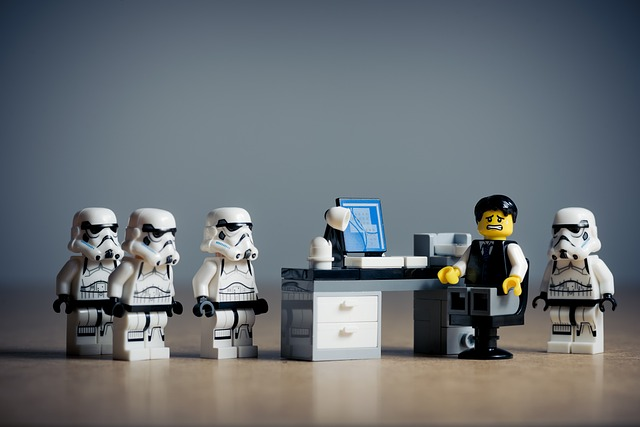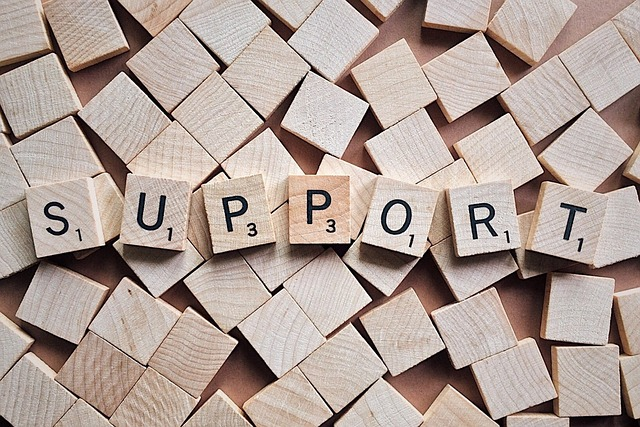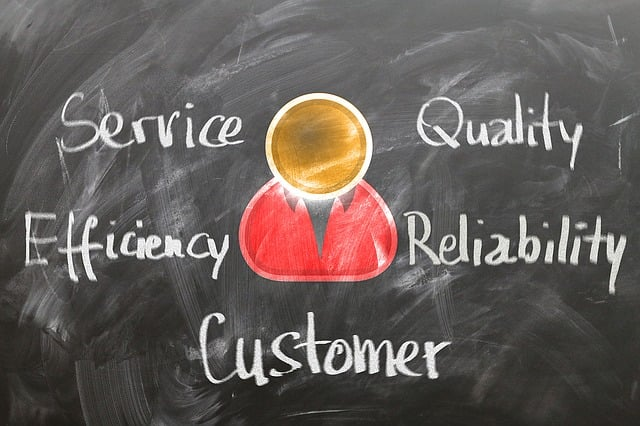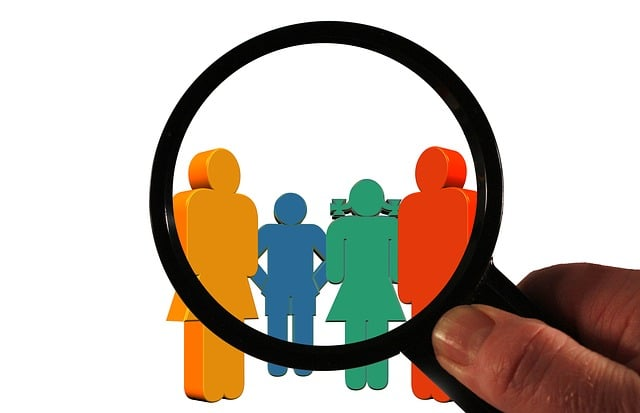In a world where time is of the essence, and the digital landscape demands swift, efficient communication, the concept of a “Canned Response” has emerged as a term of efficiency for customer service teams across the globe.
This tale isn’t just about pre-packaged words; it’s about understanding and harnessing the power of these crafted responses to transform customer service from a mundane task into an art form that enhances customer satisfaction and streamlines operations.
So, what exactly is this tool that’s changing the face of customer interactions?
What is Canned Response?
A canned response is a pre-prepared answer to common questions or customer issues. It’s a tool designed to provide quick, consistent replies to enhance efficiency and ensure customer satisfaction.
Benefits of Canned Responses

1. Streamlines Communication
Canned responses allow customer service teams to handle inquiries with unmatched speed and precision.
By having a set of predefined responses for common customer issues, agents can focus on delivering solutions rather than drafting replies, significantly reducing response times and making communication with customers effectively seamless.
2. Enhances Customer Satisfaction
The swift provision of relevant information and quick resolution of issues contribute to an overall improvement in customer satisfaction.
Customers appreciate receiving instant replies that address their concerns or direct them to the right solution, making them feel valued and well cared for.
3. Boosts Team Productivity
With canned responses at their disposal, customer support agents can manage a higher volume of inquiries without compromising the quality of service.
This efficiency not only saves time but also allows the team to assist more than one customer simultaneously, thereby increasing team productivity and reducing customer wait times.
4. Ensures Consistency in Responses
Using canned responses ensures that all customer interactions are handled uniformly, providing a consistent experience that reinforces trust and reliability in the brand.

This consistency is crucial for maintaining professional standards and ensuring that every customer’s request is met with the same level of attention and accuracy.
5. Facilitates Personalization
While canned responses are predefined, they can be customized to include personal details and relevant information specific to the customer’s issue.
This personal touch can transform a potentially sound canned message into a personalized experience, making customers feel understood and appreciated.
6. Improves Response Quality
Creating canned responses encourages teams to craft well-thought-out replies that address common inquiries effectively. This preparation ensures that customers receive the most accurate and helpful information possible, improving the quality of customer support and aiding in resolving customer issues more successfully.
When to Use Canned Responses

1. Addressing Frequently Asked Questions
Canned responses shine when addressing FAQs that customer service teams encounter daily.
By utilizing predefined replies to these common inquiries, agents can provide instant, accurate answers, significantly enhancing response times.
This efficiency not only makes customers happy by offering quick solutions but also allows agents to handle a high volume of queries effectively.
Tailoring canned responses to include all the relevant details ensures that each customer receives comprehensive information, fostering a sense of satisfaction and trust in the brand’s customer support process.
2. Acknowledging Customer Feedback
Whenever customers take the time to provide feedback, acknowledging their effort promptly is crucial.
Canned responses enable the support team to quickly thank the customer for their feedback, affirming that their input is valuable and will be considered for future improvements.
This immediate recognition can significantly boost customer satisfaction, making them feel heard and appreciated.
Moreover, such responses lay the groundwork for a positive customer experience, encouraging open communication and ongoing engagement with the brand.
3. Confirming Receipt of Customer Inquiries
In high-volume service environments, letting customers know their message has been received and is being processed is essential.

Canned responses come in handy for sending immediate confirmations, setting expectations for response times, and assuring customers that the right person is on the case.
This practice not only mitigates customer frustration by eliminating uncertainty but also enhances the customer experience by establishing a clear line of communication from the outset.
4. Providing Standard Information
For inquiries requiring standard information, such as business hours, service offerings, or pricing, canned responses ensure accuracy and consistency.
Agents can use templates to relay this information swiftly, ensuring that customers receive all the details they need without delay.

This approach not only saves time for both the customer and the support team but also guarantees that the information provided is current and uniform across all customer interactions, reinforcing the reliability of the brand.
5. Escalating Complex Issues
When a customer’s problem requires intervention from a specialized team member or a higher level of support, canned responses can facilitate a smooth escalation process.
These templates can explain the next course of action, inform the customer about the transfer of their issue to the appropriate team, and provide an estimated timeline for resolution.
This clear communication strategy minimizes confusion and reassures the customer that their issue is being resolved by the right person, thus maintaining a positive customer service experience.
6. Scheduling Follow-ups or Appointments
Canned responses are invaluable for scheduling follow-ups or appointments with customers.
They allow agents to quickly propose dates and times, confirm appointments, or remind customers of upcoming meetings.

This use of canned messages ensures that customers are kept in the loop, enhancing the efficiency of the scheduling process and reducing the likelihood of missed appointments.
It demonstrates the brand’s commitment to providing organized and considerate customer service.
7. Handling Out-of-Scope Requests
For requests that fall outside the company’s scope of service or support, canned responses help in conveying this information tactfully and offering alternative solutions or referrals.
By having prepared responses for such situations, agents can ensure that customers are gently guided towards the right solution or the next best course of action.
This approach helps maintain a positive interaction, even when the customer’s request cannot be directly fulfilled, and underscores the brand’s dedication to assisting customers in any way possible.
How to Create Canned Responses

1. Identify Common Customer Questions
Start by analyzing your customer service inquiries to identify the most frequently asked questions and common customer issues. This will help you understand the scenarios for which you need canned responses.
By focusing on these areas, you can ensure that your customer service team is prepared to respond quickly and efficiently to the most common concerns, saving time and improving the customer experience from the first impression.
2. Draft Canned Response Examples
Once you’ve identified common questions, begin drafting responses.
Aim for clarity and conciseness to ensure that your replies are easy to understand and address the customer’s concern effectively.
Good canned response examples should provide a complete answer or a clear next step, reducing the need for follow-up questions and speeding up resolution times.
3. Categorize Responses
Organize your canned responses into different categories based on the type of customer issue or inquiry.
This categorization makes it easier for customer service agents to find the appropriate response quickly.
Categories could be based on product lines, service issues, billing inquiries, or any other relevant divisions that match your company’s operations and customer support team’s needs.
4. Personalize Templates
While canned responses are pre-written, adding personalization options is crucial.
Create templates that allow agents to insert the customer’s name, specific details about their issue, or other personal touches.

This step ensures that even though a response is pre-written, it feels individualized to the customer, enhancing their experience and connection with your brand.
5. Review and Refine
Before finalizing your canned responses, review them for clarity, tone, and accuracy.
It’s essential that they reflect your brand’s voice and are empathetic to the customer’s situation.
Consider having different team members, including customer service agents and managers, review the responses to ensure they’re the best canned responses possible.
6. Train Your Team
Once your canned responses are ready, train your customer service team on how to use them effectively.
Ensure all agents understand when it’s appropriate to use a canned response and when a more personalized reply is needed.
Training should also cover how to customize responses with personal details to ensure customers do not feel they’re receiving a generic reply.
7. Implement and Monitor Usage
Implement your canned responses into your customer service platform, making sure they’re easily accessible to all agents.
Monitor the use of canned replies to ensure they’re being used appropriately and to identify any additional training needs.
Regularly soliciting feedback from both customers and agents can help you refine your canned responses over time to better meet customer needs.
8. Iterate Based on Feedback
Continuously collect feedback from both customers and customer service agents on the effectiveness of your canned responses.

Use this feedback to make necessary adjustments to ensure that your replies remain relevant, helpful, and aligned with customer expectations.
Regular updates will help you maintain a set of perfect canned response templates that evolve with your business and customer base.
Examples of Canned Responses
Looking for canned response examples? Look no further – all our agents answered same questions you probably handle on a daily basis with your current and new customers. Using canned responses, you can get customer feedback and serve customers faster. So, dig into our examples of canned responses and use canned responses in your answers to make first impressions last.
- “Thank you for reaching out! We’ve received your message and will get back to you within [timeframe].”
- “We appreciate your feedback and are looking into your concern. We aim to resolve it promptly.”
- “Good morning! How can we assist you today?”
- “Your issue has been forwarded to our support team. We’ll update you as soon as we have a resolution.”
- “Thank you for your patience. Your issue has been resolved successfully. Please let us know if you have any more questions.”
- “We’re sorry to hear you’re experiencing this problem. Can you provide more details so we can assist you better?”
- “This is a confirmation that your appointment is set for [date and time]. We look forward to speaking with you.”
- “Our business hours are [hours]. How can we assist you during this time?”
- “We’ve noticed you haven’t used your account in a while. Can we assist you with any concerns?”
- “Welcome back! We value our returning customers. How can we make your experience even better today?”
- “Thank you for your inquiry. Here’s a link to our knowledge base where you might find the answer you’re looking for: [link].”
- “We’re thrilled to have you with us! Welcome to [Company]. How can we help you get started?”
- “To ensure we understand your request correctly, could you provide us with more specific details or examples?”
- “We are currently experiencing a high volume of inquiries. We appreciate your patience and will respond as quickly as possible.”
- “Your feedback is invaluable to us. Thank you for sharing your thoughts!”
- “We’ve updated our
. Here’s what’s new for you: [brief description].”
- “To better assist you, we’ve escalated your issue to our specialized team. They will reach out to you directly.”
- “Thank you for your question. While this isn’t something we currently offer, we’ve noted your interest for future updates.”
- “You’ve reached us outside of our business hours. We’ll get back to you as soon as we’re back in the office. Thank you!”
- “As requested, here’s a follow-up on your issue. We’re still working on it and will keep you updated.”
- “We’re happy to announce that your issue has been resolved. Here’s what we did: [solution]. Please confirm that everything is now working as it should.”
- “Thank you for considering [Company] for your needs. Here are the details you asked for: [information].”
- “We understand the urgency of this matter and are working to resolve it as quickly as possible.”
- “To help us serve you better, could you rate your experience with our service today? [link to survey].”
- “Here’s a quick tip from our team: [useful information or advice].”
- “We’re sorry for any inconvenience this may have caused. As a gesture of our commitment to your satisfaction, we’d like to offer [solution/compensation].”
- “Your subscription has been successfully updated. Here are the details of your new plan: [information].”
- “Thank you for your order! Here’s your confirmation [order number]. You can expect delivery by [date].”
- “We’ve received your return request. Here are the next steps: [instructions].”
- “Reminder: Your [service/product] is due for renewal. Don’t miss out on continuous service: [link].”
- “Based on your question, we think this article from our help center might be helpful: [link].”
- “For immediate assistance, you might find our FAQ page useful: [link to FAQs].”
- “Your privacy is important to us. We’ve updated our privacy policy: [link].”
- “Please be advised of our holiday hours: [details]. We wish you a wonderful season!”
- “You mentioned experiencing [specific issue]. This quick fix might help: [solution].”
- “Thank you for your interest in our services. Here’s a detailed brochure: [link].”
- “To reset your password, please follow these steps: [instructions].”
- “We noticed you left items in your cart. Can we assist you in completing your purchase? [link].”
- “We value your loyalty. As a thank you, here’s a special offer just for you: [details].”
- “Thank you for bringing this to our attention. We’re making it our priority to investigate and will update you soon.”
- “We’re here to help 24/7. If you need immediate assistance, don’t hesitate to contact us again.”
Common Mistakes that Customer Service Teams Make With Canned Responses

1. Over-Reliance on Canned Responses
One common mistake customer service teams make is over-relying on canned responses for every customer interaction.
While canned messages are designed to save time and ensure consistency, they can make customers feel undervalued if used inappropriately.
For instance, responding to a unique customer issue with a generic reply that doesn’t address their specific concerns can lead to frustration.
It’s crucial to balance the use of canned responses with personalized replies, especially in complex situations where a tailored response is necessary to fully resolve a customer’s issue.
2. Lack of Personalization
Failing to personalize canned responses is another frequent oversight. Customers expect to be treated as individuals, not numbers.
A canned reply that reads, “Dear Customer, your request has been received and will be processed,” can feel impersonal and cold.
Teams should ensure that canned messages are adapted to include the customer’s name, reference specific details of their query, and, when possible, add a personal touch or acknowledgment of the customer’s history with the company.
This approach helps in creating a more engaging and meaningful interaction between a customer support team and customers.
3. Not Updating Canned Responses
Customer service environments are dynamic, with products, services, and policies frequently changing.
However, teams often neglect to update their customer service responses to reflect these changes, leading to outdated information being shared with customers.

For example, using a canned response that mentions discontinued products or outdated business hours can cause confusion and erode trust.
Regularly reviewing and updating canned replies to ensure they remain accurate and relevant is essential for maintaining high-quality customer support.
4. Inappropriate Use of Canned Replies
Using canned responses in situations where a more detailed investigation or a human touch is required can be detrimental to customer satisfaction.
For instance, responding to a customer’s detailed complaint or feedback with a simple, “Thank you for your feedback, we will look into it,” without addressing specific points raised, can come across as dismissive.
Customer service teams need to discern when to use canned messages and when to take the time to craft individual responses that fully engage with the customer’s concerns.
Training teams to recognize these different scenarios and respond accordingly is key to enhancing the customer support experience.
Key Takeaways
- Utilize canned responses to efficiently address common customer issues, saving time for both customer service teams and customers.
- Personalize canned replies to ensure customers feel valued and understood, enhancing their overall experience.
- Regularly update canned responses to reflect current business hours, policies, and product information, maintaining accuracy and relevance.
- Train customer service teams on when and how to appropriately use canned messages, balancing efficiency with personalization.
- Avoid over-reliance on canned responses for complex or unique customer issues that require a more tailored approach.
- Include specific details and personal touches in canned replies to avoid making customers feel like they’re receiving a generic response.
- Ensure all agents are equipped with a variety of canned responses for different scenarios, enabling them to provide quick and accurate support.
- Monitor and collect feedback on the use of canned responses to continuously improve their effectiveness and customer satisfaction.
Conclusion
Canned responses, when used correctly, are a powerful tool for customer service teams. They not only save time but also help in delivering consistent and accurate answers to customer inquiries. However, the key to their success lies in personalizing responses, regularly updating content, and training teams on their effective use, ensuring that customers receive the support they need and feel genuinely cared for.



